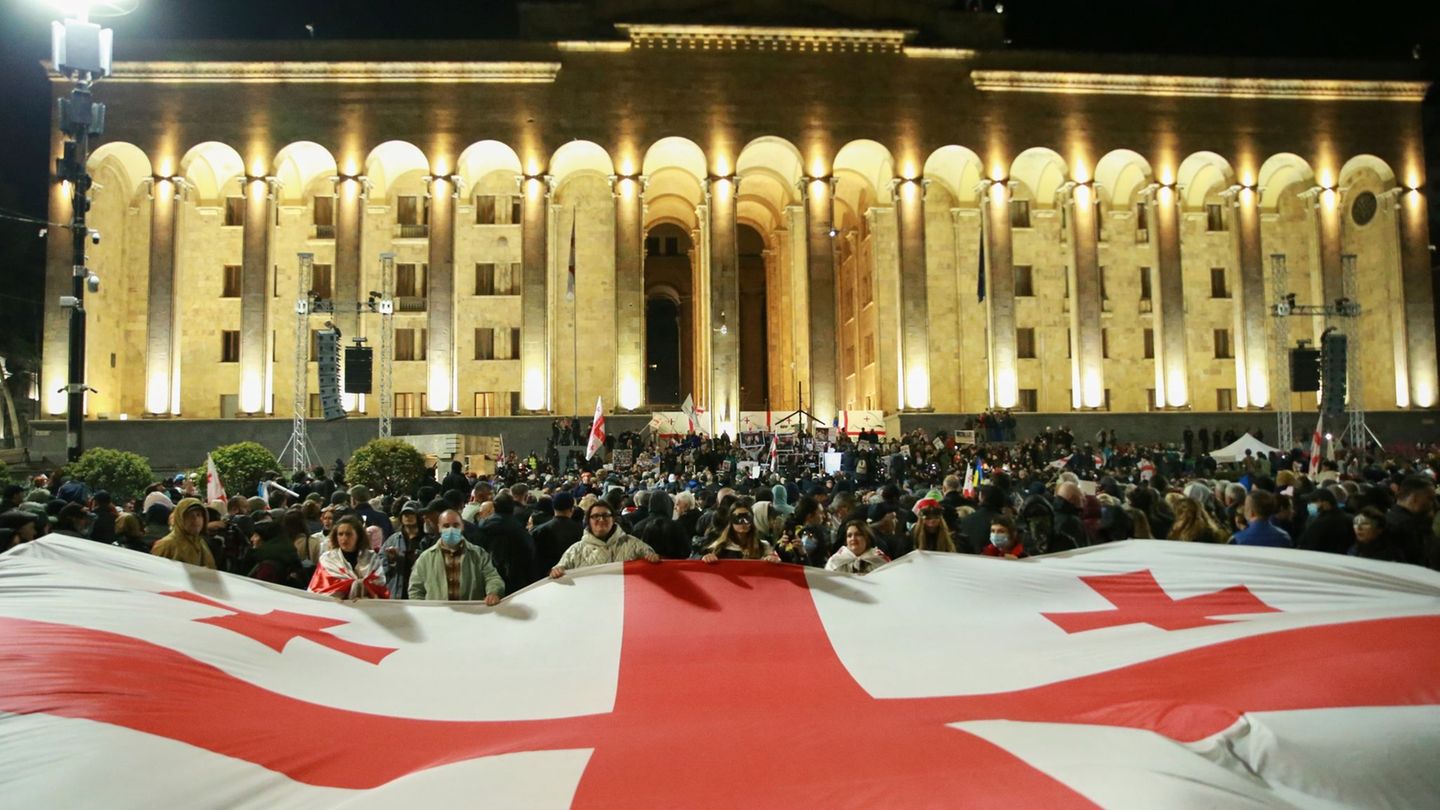The equation exercised with the dollar It remains singular: The Government prefers to get rid of those who diagnose uncertaintyeven encouraging dubious lynchings on the networks, rather than digging deep into the crisis of confidence to find the real reasons that have cracked the front. Minister Luis Caputo he watches it on TV.
It is a sequence that began with an angry exchange between President Javier Milei and economist Orlando Ferreres, and continued with the opinions of Spotorno, director of Ferreres’ consultancy, on radio and television. Ferreres had said that the Government’s announcement (the “Conference”) was a “Bonex plan of the banks” and “that is why it was not well received by the market.” Spotorno, on the other hand, suggested that the conference of Luis Caputo and Santiago Bausili on the announcement of the change of debt between the BCRA and the Treasury It had been “a very bad announcement of a measure that is not bad, but it could have been done with a statement from the Central Bank”.
Puts start to move: the real reason for the dollar’s jump
The key, once again, must be sought in different places, small Alephs that, like Borges, hide here and there, but represent the universe of complications. In the immediate future, we will mention some of them, which will play an active role from now on.
The Central Bank (BCRA) wants to dismantle a series of contracts in pesos, called puts, which serve as liquidity insurance for banks. In total, the entity has obligations for around $17 billion. The news is that $2 billion were spent in the last week, compared to the previous estimated stock of $19 billion. The other fact is that this exercise took place in the days following the meeting between the Government and the banks.
On the one hand, the banks want to know what the Government intends to do. The monetary regulation letter (Leremo) is a tool that the Treasury and the BCRA They will use it to gain time and currencyalways in the case that the Treasury wants to buy back debt in dollars. The hypothesis that is floating around says that the puts are “the last barrier” to removing exchange controls. On the other hand, there are others who, first, focus on measuring the amount of dollars that the BCRA manages to accumulate. In any case, the issue of puts is seen as a “danger” for the official plans to end the monetary emission.
A sign that worried the Government: banks, rating agencies and then
The signal of the last few days was the one that most worried the economic team. A change of mood on the part of the market? Can banks exercise these puts en masse overnight and force the Central Bank to issue pesos to buy back their bonds? There is an additional problem. These operations are counted by the IMF within the monetary financing target, which is why they have been asked to be liquidated. The IMF and the risk rating agencies are seen by the Government as potential collateral damage that must be taken into account.
Let’s add another fact. The Government is waiting for the reports in these hours. Rating agencies Fitch Ratings, Standard & Poor’s and others could make a comment and lower a rating that ends up raising the country’s risk even further. This is the worst scenario, because it removes the possibility of rolling over the debt at the end of the year and would increase exchange rate tensions. A preview of this was the spearhead of the risk rating agency Fitch Ratings, which noted the “bad” reaction of the market. In a video conference with journalists from New York, Chief Sovereign Analyst Todd Martinezapplauded Milei’s fiscal adjustment, but described the exchange rate policy as “heterodox” and warned that “a credible exchange rate is needed as an anchor.” Ergo, the Government must devalue. “The key is when the exchange rate restrictions will be lifted, because if they do, there will be new investments and an influx of dollars. We do not see a V-shaped recovery; the lifting of the restrictions is crucial in this and the path of the dollar, because there will be pressure to devalue further, either from the market or from the IMF,” he said.
The bond restructuring that Fitch Ratings sees
Just three weeks ago, Fitch assigned Argentina a ‘CC’ rating. This means that, in the opinion of the consultancy, “a bond restructuring or other default event of some kind seems likely in the coming years”According to the firm’s statement, this is due to “the persistent uncertainty about the sovereign’s ability to achieve a sustained accumulation of international reserves and regain access to global capital markets and, therefore, make large payments on foreign currency bonds that mature in the coming years.”
In fact, the reader must consider that this is not the only problem that lies ahead. Always considering the cepo as one of the great shortcomings going forward, the reserves are still far from the level necessary to move towards an opening without major shocks. Could an IMF injection change this scenario? It seems difficult. The advisers who work with the president insist that Even if the organization led by Kristalina Georgieva were to make the gesture of disbursing a few billion, the idea would not be to completely dismantle the restriction.. There is fear.
Getting worse before getting better: a hypothesis
The Argentine economy is going through a phase of high uncertainty, especially in the real and financial spheres, where signs of stabilization are overshadowed by multiple factors that seem to be moving in the opposite direction. The outlook for the coming months suggests that the situation may get worse before, perhaps, improving.
In recent weeks, the quotes of the blue dollar and the CCL dollar have shown high volatility. The blue dollar has fluctuated around 1,400 pesos, although it has experienced sporadic falls, while the CCL dollar has followed a similar trendalso breaking through the 1,400 peso barrier. This instability reflects the lack of confidence of investors and the pressure on the Central Bank’s reserves, something that could worsen.
The central ideas are two. On the one hand, The government has adopted a stance that seeks to reduce inflation at all costs, even at the risk of inducing a deep recession that could leave the country plunged into a real depression.. Broadly speaking, given the lack of dollars and investments, the strategy that is constantly communicated from the Treasury Palace consists of integrating this recessionary scenario and extending it over time. The second idea is Maintain a fixed exchange rate, a micro-devaluation table, while reducing inflation, with the hope of unifying the exchange rate in the future.
However, this policy could deepen the economic crisis by causing an even greater contraction of economic activity, with the consequent paralysis of the Casa Rosada, the erosion of the president’s popularity and even greater friction with the governors.
Source: Ambito




